BMW's MINI Vision Next 100 concept car changes colour depending on the driver's mood
Car brand BMW has unveiled an autonomous MINI concept vehicle designed to be shared between several drivers, which could change colour depending on different users' preferences (+ movie).
The MINI Vision Next 100 design aims to answer "several key questions on urban mobility over the years ahead", including how the company will respond to the onset of a digitised, interconnected world.
The brand – owned by German company BMW – believes that drivers in the future will share its vehicles, and call on one of the fleet to pick them up when required.
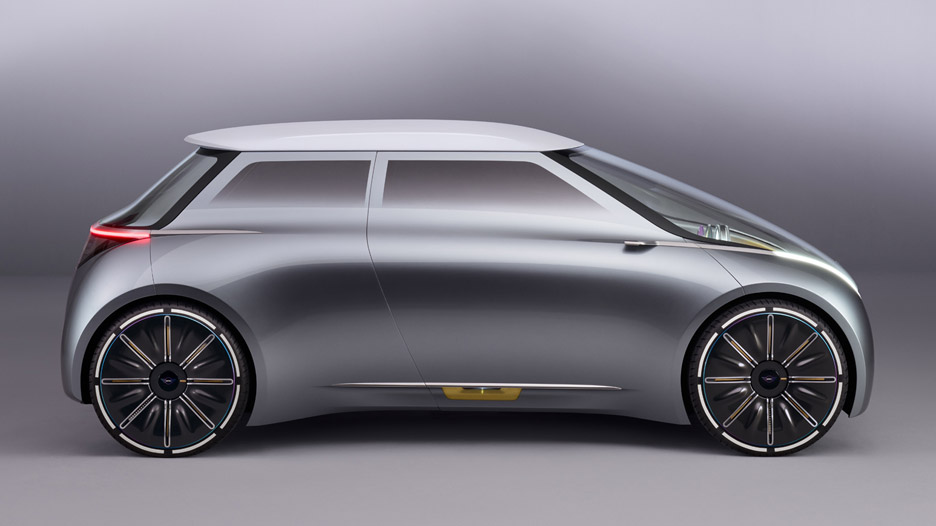
Once the MINI is hailed, the vehicle would autonomously drive to the pick-up location. By the time it arrives, the car would have reconfigured all of its settings to suit the user's preferences.
"The car is part of your life, but it is also part of other people's lives," said MINI design chief Anders Warming. "That means it is part of a sharing community and it is part of the way you move from A to B, but still makes best use of time and space going from A to B."

MINI believes that sharing cars and homes will become increasingly popular and necessary in the future. It recently showcased a co-living housing scheme as a potential solution to the affordable housing crisis in cities.
To personalise the travel experience, the Vision Next 100 would be able to suggest music and destinations based on the driver's previous choices. The user would also be able to change the colour of the roof, while the rest of the vehicle would be wrapped in a silver skin – referred to as a "blank canvas" by MINI designers.
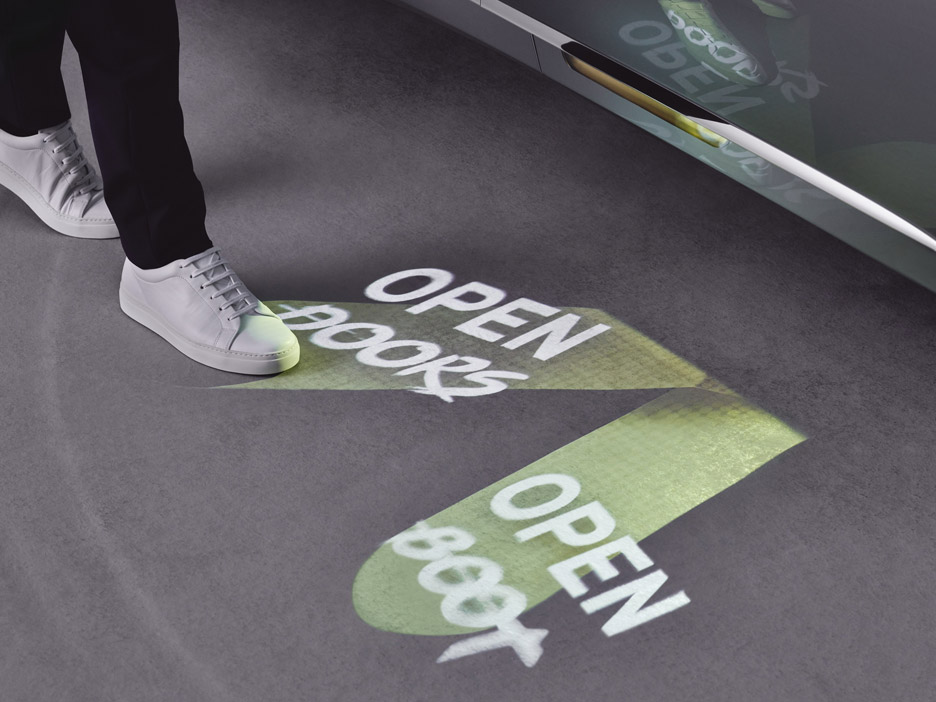
Graphics would project from the side of the car to greet drivers, before displaying options to either open the side doors or the boot. The user would tap the graphics with their foot to perform the desired action.
Two doors would slide out and open, making it easy for passengers to enter and exit. As users step inside, interior lighting levels would automatically adapt according to the driver's preset settings, time of day, or driving situation.
A central circular instrument panel called the Cooperizer would "illuminate like a kaleidoscope" and allow the driver to make adjustments to the vehicle's settings.
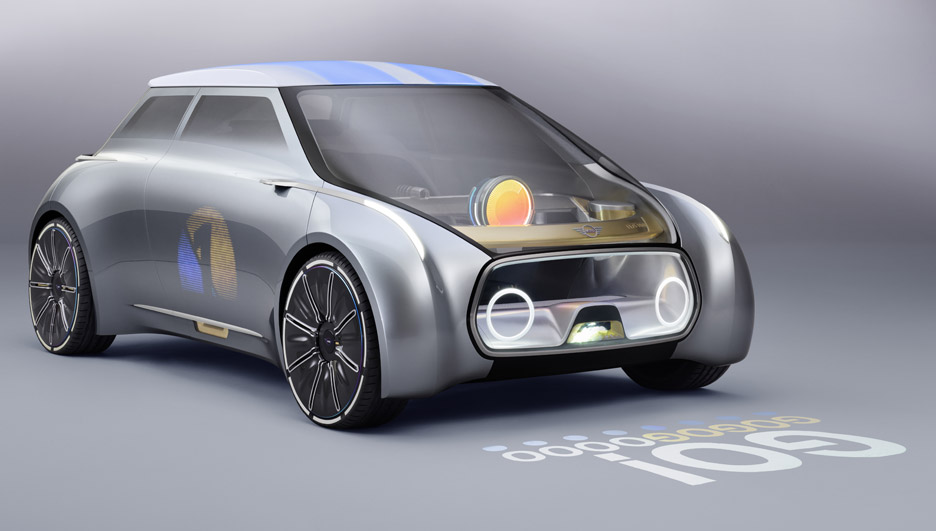
"The colours and patterns of [the Cooperizer] generates symbolise the car's multi-faceted digital intelligence, which allows it to select a personalised setting for each driver, encompassing entertainment, communications and autonomous-driving options," said MINI.
"On the move, the driver can influence the Cooperizer's decision-making, as the rotary controls allow adjustments to the interior ambience and driving mode."
In the future, MINI anticipates a reduced need for crash zones around the body of the car, so has designed a much more spacious interior for the Vision model.
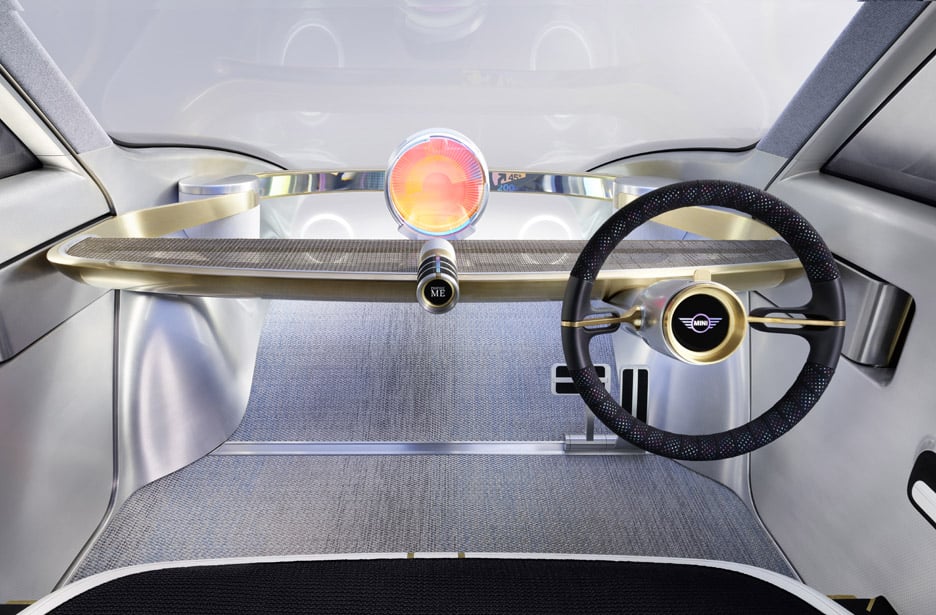
A full-width bench replaces conventional safety-focused seating to provide additional leg room, and the pedals are designed to slide away when autonomous mode is selected.
The driver can take control of the vehicle at any moment by moving the steering wheel into the central area between themselves and the front passenger.
MINI believes that car enthusiasts will still want to drive themselves "as often as possible" in the future, despite the onset of autonomous technologies. The Vision Next 100 design therefore aims to enhance driver engagement and make the act of driving fun.
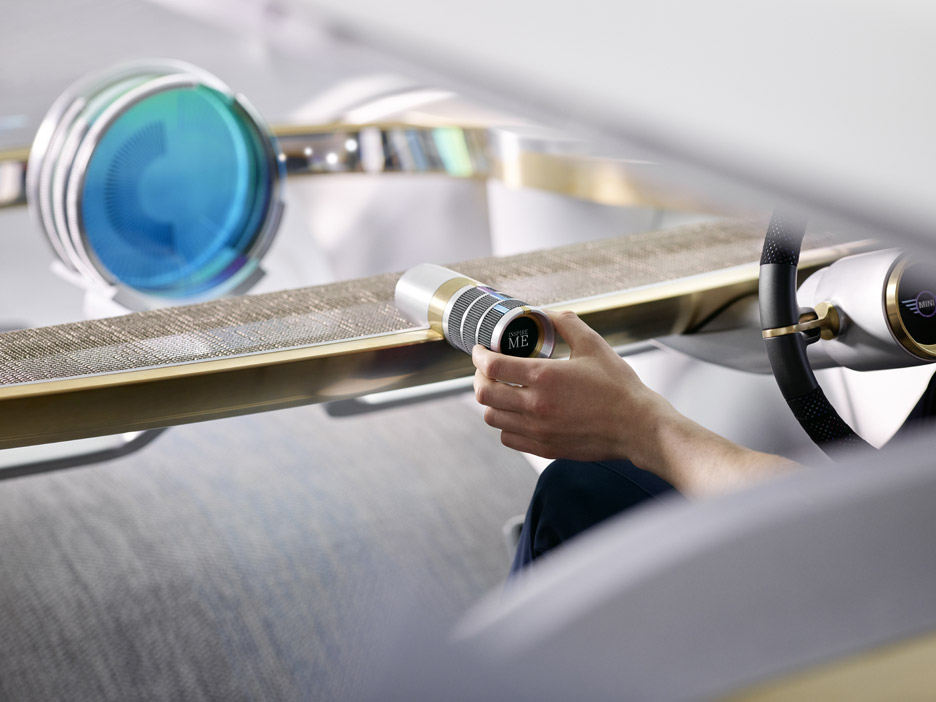
A glass front would offer a clear view of the road, while augmented reality displays would show navigation aides and the ideal driving line.
"The mechanical experience of speed and the feeling of nipping swiftly through twists and turns are part of what makes a MINI a MINI," said the brand's statement. "In a future world of self-driving cars, this side of motoring may have an even more significant, even more special role."
When the driver and any passengers arrive at their destination and disembark, autonomous technology manoeuvres the vehicle to a charging station, a parking space or the next user.
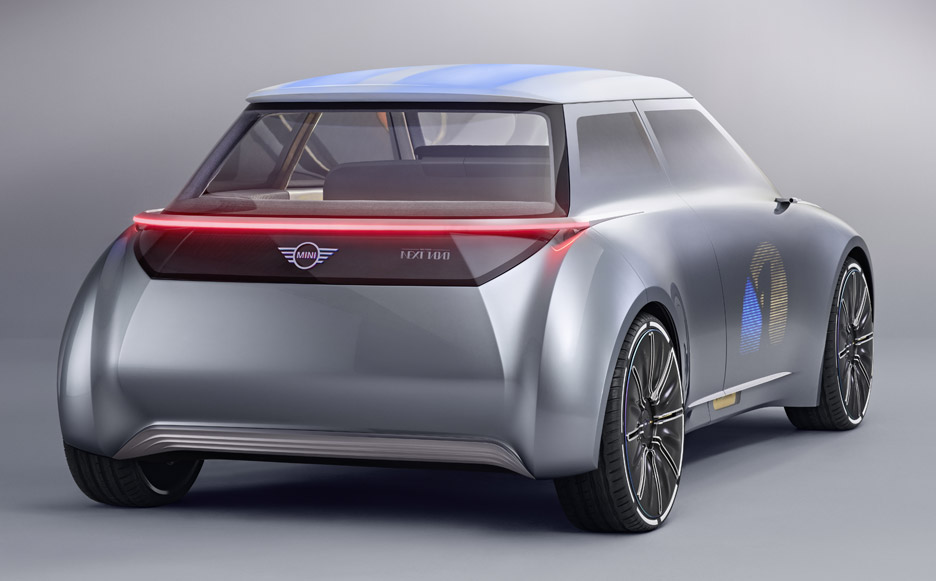
Sharing cars intensively would increase the general wear and tear of vehicles, so MINI has investigated the use hard-wearing materials for the interior.
The vehicle's floor, roof lining and side-panel trim would be made out of recycled plastic and aluminium.
The storage net behind the steering wheel would made from lightweight basalt and the lower section of the seat would be finished in a recycled cellulose material similar to paper.
"The novel use of materials included deliberately allows a patina to develop through use, ensuring they retain a long-lasting and sophisticated appearance," said Warming.
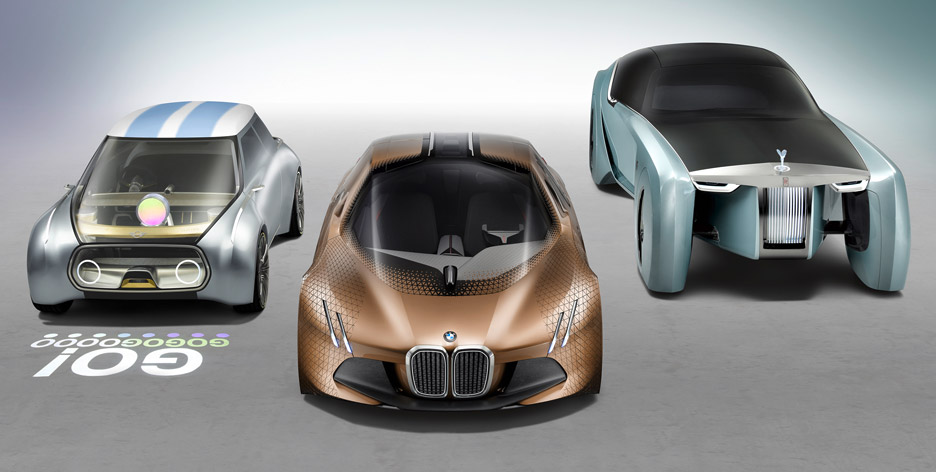
BMW is revealing four different concept cars this year under its different brands – including MINI, BMW and Rolls-Royce – as part of its 100th anniversary celebrations.
The first, a shapeshifting car with built-in computers that could predict driver desires and behaviour, was unveiled in March 2016.